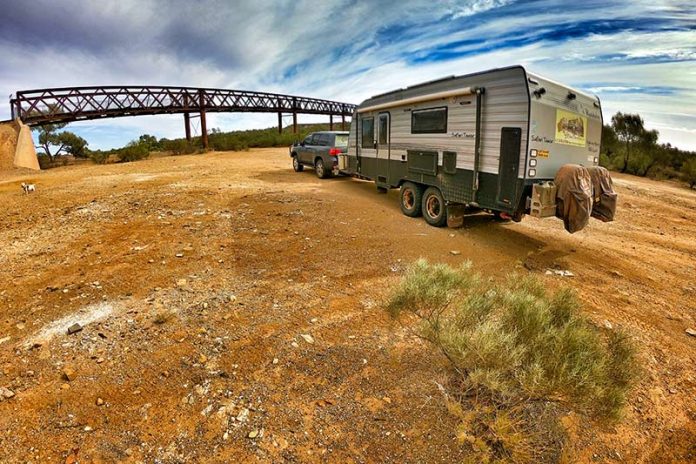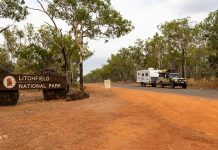Think back to the time you were getting set-up with your first caravan and tow vehicle. Can you remember what you were looking for? You probably looked at the accessories fitted, the size and weight of both, the layout and probably a heap of extra gear to carry around on your travels. Now, be honest: did you think about the tyres that were fitted to your car and caravan? I’ll put money on it, for the vast majority of readers, that the answer is no – especially the caravan tyres.
If you purchase a new car or caravan, you may have had no choice about what tyres are fitted by the manufacturer. They are usually a compromise between comfort, safety, load-carrying capacity and, of course, price. They are normally good enough for 90 per cent of the journeys you’re likely to take, but if you have intentions of taking long-term trips or even venturing offroad into the vast Australian outback, the chances are that the standard rubber fitted to your car and van will be hopelessly inadequate.
This month, we want to talk about tyres. What sort should you fit to your caravan and tow vehicle, what pressure should they be inflated to and, most importantly, how should you take care of them?
TYPES OF TYRES
There are essentially three types of tyres available for tow vehicles and caravans alike. They are On-Road, Off-Road and All-Terrain. Within those, there are various types of construction, generally divided into Passenger Car tyres and Light Truck tyres. Even within those two groups, there can be variations. It can make choosing the right type of tyre for your rig quite confusing. Let’s try to make the choice a little easier.
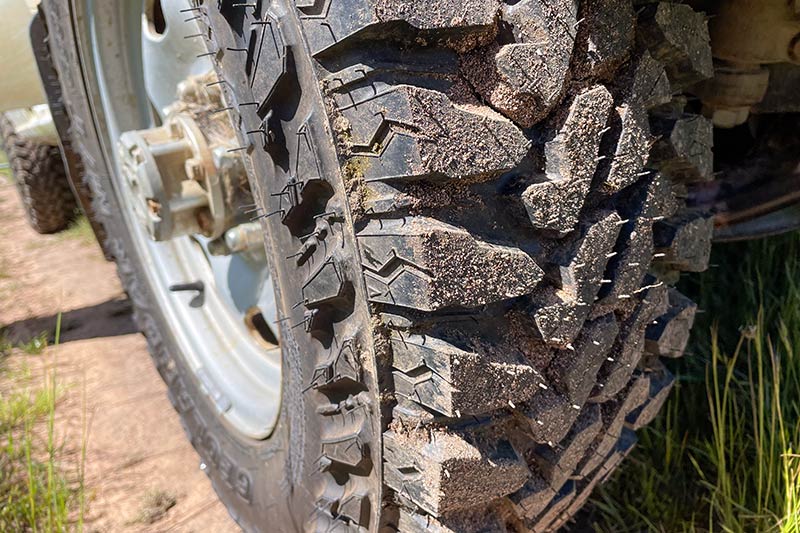
The thing to keep in mind is that Light Truck tyres are built stronger than Passenger tyres. This is because they are made to carry heavier loads and resist damage. This additional construction means they are heavier and don’t ride as well as passenger tyres, which are built for speed, handling and comfort.
If you have a 4WD and you never tow with it or drive offroad, you’d be mad to fit anything else apart from Passenger tyres. It’s what the manufacturer would likely have fitted at the factory. As long as you maintain the correct tyre pressures, they will suffice for the vast majority of the driving you do.
However, if you’re considering towing anything heavier than a box trailer for any considerable distance, you will want a tyre with better load-carrying capacity and better resistance to damage. This is where Light Truck tyres are the preferred option.
It will be at this point that you will need to choose between full Off-Road tyres or All-Terrain tyres. You can usually tell the difference by the name of the tyre and also the tread pattern. The more open the gaps between the tread blocks, the more offroad-orientated the tyre.
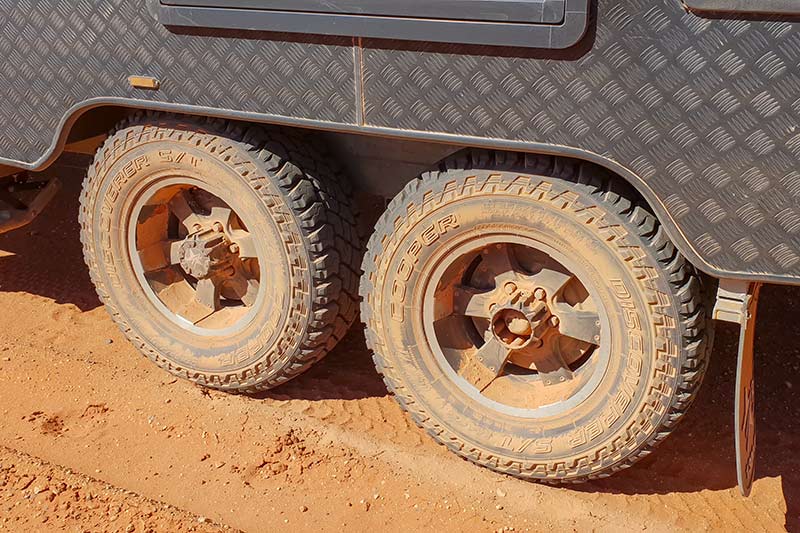
Unless you intend to take your 4WD into extreme offroad conditions, All-Terrain tyres will serve you best. They will give you the best compromise between comfort, load-carrying capacity and puncture resistance.
As for the tyres on your caravan, regardless of your intended use, I would fit All-Terrains as well. There is no driving power being sent to your trailer’s wheels, so even in the worst offroad conditions, mud tyres would be of little advantage. What’s more, the large gaps between the tread blocks are vulnerable to damage by sharp rocks and stones on dirt roads.
SIZE AND PROFILE
If you look at the side of any tyre, you will see a series of numbers and letters that look something like this: LT256/75R16.
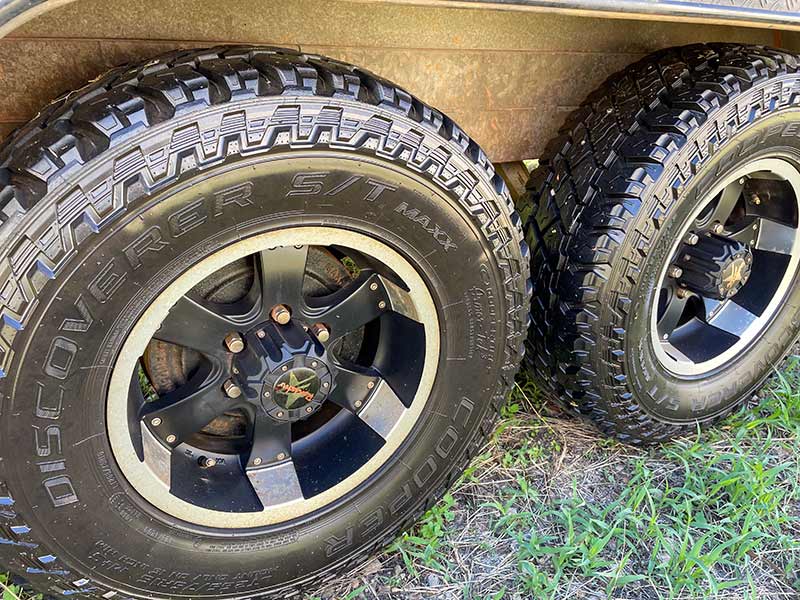
The LT refers to the type of construction of the tyre, in this case, Light Truck. The next number refers to the width of the tyre, in this case 265mm. The next number refers to the aspect ratio or, put simply, the ratio between the width of the tyre and the ‘height’ of the sidewall of the tyre. The higher the aspect ratio, the higher the tyre tread will sit above the edge of the wheel’s rim.
A low aspect ratio is great for speed and handling, but terrible for weight carrying and comfort. High aspect ratios offer better resistance to damage, especially offroad, but your car just can’t corner as well as it would with low-aspect-ratio tyres.
As a rule, high-aspect-ratio tyres are more suitable for your tow vehicle and caravan as they will carry loads better and be less vulnerable to damage from Australia’s less-than-great roads. Keep in mind, if you do fit tyres that are different to the originals fitted by the manufacturer, you may be limited by the minimum speed and load-carrying capacity specified by the manufacturer. Your tyre dealer can help you get this combination right.
CHOOSING A BRAND OF CARAVAN TYRES
Thirty years ago, your choice of tyre brands was fairly limited. These days, you can choose from hundreds of tyre brands made in all corners of the world. This wide range also means prices for tyres vary greatly. It can make deciding on a tyre very difficult.
Let me make it simple for you. Caravanning usually involves driving long distances, often into regional and remote areas of the country. You want to do two things with your tyre choice: buy a brand that is widely available, and buy a brand that has a reputation for longevity and reliability.
I’ve bought cheap, little-known caravan tyres in the past and been extremely disappointed. Save yourself a lot of heartache and stick to the well-known brands. You will experience fewer punctures or damage and, if you do damage one beyond repair, a replacement should be easy to obtain.
TYRE PRESSURE
When it comes to figuring out what pressure at which to run your caravan tyres, as well as your tow vehicle tyres, there are so many myths and methods professed out there, it can be extremely confusing what you should do. Fortunately, it doesn’t have to be such a mystery.
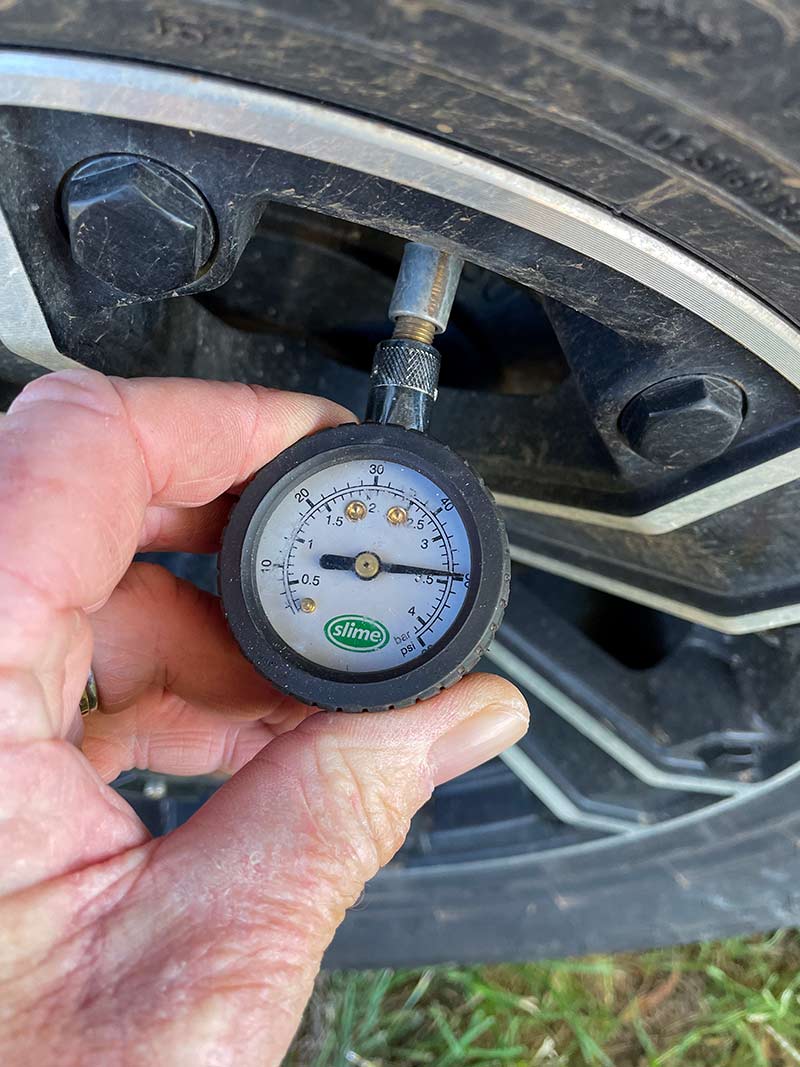
In short, the vast majority of owners towing vans across the country are running with under-inflated caravan tyres, both on the tow vehicle and, more likely, on the caravan itself. Most tyres will have a load rating on the sidewall. It will read something like this:
- Max Load Single Axle: 1650kg at 550kPa (80psi) Cold
- Max Load Dual Axle: 1500kg at 550kPa (80psi) Cold
It might surprise some owners to learn that their tyres are capable of such high tyre pressures, especially when the compliance plate or tyre chart on the vehicle recommends pressures of less than half that amount. That is because these pressures are for an empty or lightly loaded vehicle.
The chances are that when you take your car and caravan out for an extended trip, both will be close to (if not exceeding) their maximum weight limits. It stands to reason you will need higher tyre pressures to safely cope with this load.
If you intend to venture offroad, and by this I mean a long-distance drive across a gravel or corrugated road, then we have to consider much lower tyre pressures. Again, many owners will grossly underestimate just how low they will need to take the pressure down to avoid damaging the tyres.
The way to calculate the exact tyre pressures for your rig will vary depending on the type of tyre, the construction and the recommendations of the manufacturer. Again, the RAC article offers a detailed method to do it yourself. But if you’re not mathematically inclined, I strongly recommend having your rig weighed by a professional caravan weighing service to obtain the actual weight on each wheel and consult your tyre dealer for the correct pressure for that amount of weight.
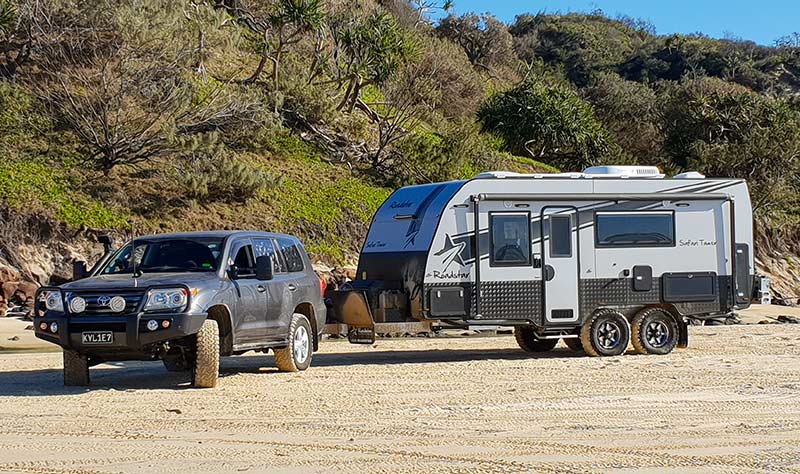
Don’t be surprised to learn that you require pressures of 50psi in the front tyres of your tow vehicle, and 60psi in the rear. A single-axle caravan could need 55psi in each tyre, and a tandem-axle van slightly less.
If you need to drive long distances on gravel roads, you may need to reduce tyre pressures to as low as 20-25psi in all your tyres, or less for severe gravel and corrugated tracks. Under these pressures, you must reduce speed and drive to the conditions. Never exceed 80km/h and avoid sharp changes in direction.
AGE OF YOUR CARAVAN TYRES
It may surprise you to learn that your caravan tyres (or any tyres) will not last forever. It might even shock you to figure out just how old your tyres are. There are lots of opinions out there about how old tyres can be before they should be replaced. Most will say somewhere between five and 10 years. Unfortunately, it isn’t that simple.
I’ve seen tyres less than five years of age that had significant cracks in the sidewalls and damaged tread. I’ve also seen tyres that were well into the seven to 10-year age range that looked almost as new as the day they were fitted. Simply judging by the age of your tyres is not the way to determine if they should be replaced.
The things to consider here are that tyres are primarily made of rubber, which deteriorates over time. That rate of deterioration varies depending on their exposure to the sun, to water and a host of other environmental conditions. If correct pressures have not been maintained, they will wear at a greater rate.
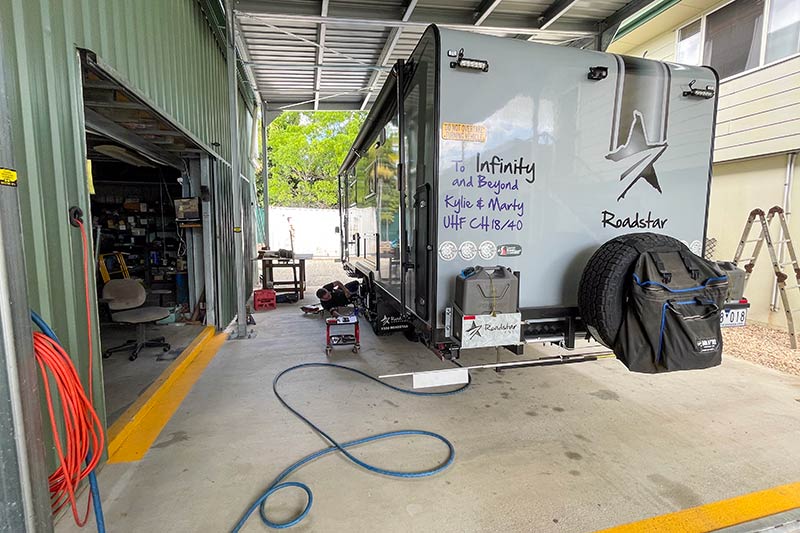
The only way to be sure is to visually examine your tyres regularly. Look for cracking or cuts in the sidewalls of the tyre. Look at the tread for broken tread blocks and signs of uneven wear. All of these are signs that your tyres have reached the end of their life. If they look fine but are approaching 10 years of age, you should consider replacing them anyway.
CARE AND MAINTENANCE
I don’t think anyone reading would not know the basics of tyre care and maintenance, but how many of us do it regularly? Checking tyre pressures and visually inspecting them for damage and wear is something you should do every week, especially when you’re on a trip and travelling long distances. Having your wheels and tyres balanced and aligned at least every six months will also extend the life of your tyres.
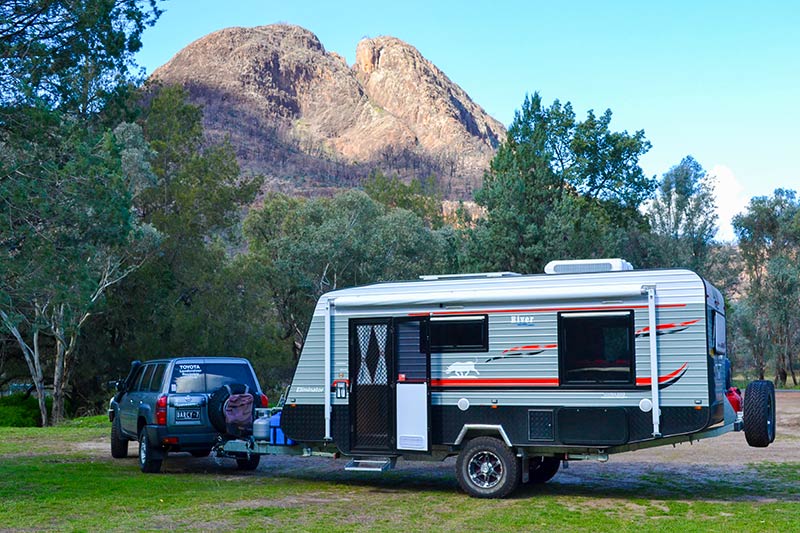
This regime should extend to your caravan tyres as well. There are many specialists doing caravan wheel alignments as part of their weight-checking services. If you’re about to go on a long trip and your caravan has been sitting in storage for weeks or even months, you really should do a thorough check of your caravan tyres, as well as your tow vehicle’s tyres, and use the opportunity to get the wheels aligned.


